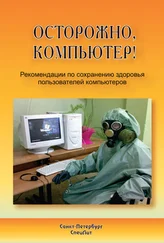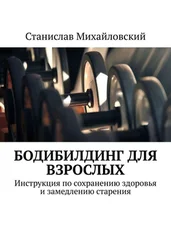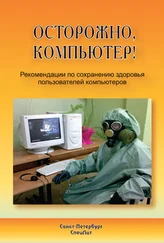10. National Cancer Institute. Formaldehyde and Cancer Risk. September 5, 2016. https://www.cancer.gov/about-cancer/causes-prevention/risk/substances/formaldehyde/formaldehyde-fact-sheet.
11. McGwin G., Lienert J., Kennedy J. I. Formaldehyde exposure and asthma in children: a systematic review. Environ Health Perspect. 2010;118(3):313–317. doi: 10.1289/ehp.0901143.
12. Lippiatt B. C. BEES3.0 Building for Environmental and Economic Sustainability: Technical Manual and User Guide. NIST Interagency/Internal Report (NISTIR) — 6916. https://www.nist.gov/publications/bees-30-building-environmental-and-economic-sustainability-technical-manual-and-user.
13. Всемирная организация здравоохранения. Диоксины и их воздействие на здоровье людей. 04.10.2016. https://www.who.int/ru/news-room/fact-sheets/detail/dioxins-and-their-effects-on-human-health.
14. Martino-Andrade A. J., Chahoud I. Reproductive toxicity of phthalate esters. Mol Nutr Food Res. 2010 Jan;54(1):148–57. doi: 10.1002/mnfr.200800312. PMID: 19760678.
15. Rudel R. A., Camann D. E., Spengler J. D., Korn L. R., Brody J. G. Phthalates, alkylphenols, pesticides, polybrominated diphenyl ethers, and other endocrine-disrupting compounds in indoor air and dust. Environ Sci Technol. 2003 Oct 15;37(20):4543–53. doi: 10.1021/es0264596. PMID: 14594359.
16. Desvergne B., Feige J. N., Casals-Casas C. PPAR-mediated activity of phthalates: A link to the obesity epidemic? Mol Cell Endocrinol. 2009 May 25;304(1–2):43–8. doi: 10.1016/j.mce.2009.02.017. Epub 2009 Mar 9. PMID: 19433246.
17. The National Institute for Occupational Safety and Health. LEAD: Information for Workers. Health Problems Caused by Lead. Centers for Disease Control and Prevention: https://www.cdc.gov/niosh/topics/lead/health.html.
18. Vartanian L. R., Kernan K. M., Wansink B. Clutter, Chaos, and Overconsumption: The Role of Mind-Set in Stressful and Chaotic Food Environments. Environment and Behavior. 2017;49(2):215–223. doi: 10.1177/0013916516628178.
19. Grzywacz J. G., Segel-Karpas D., Lachman M. E. Workplace Exposures and Cognitive Function During Adulthood, Journal of Occupational and Environmental Medicine: June 2016, Volume 58, Issue 6, p 535–541. doi: 10.1097/JOM.0000000000000727.
20. LaMonte M. J., Buchner D. M., Rillamas‐Sun E., Di C., Evenson K. R., Bellettiere J., Lewis C. E., Lee I.‐M., Tinker L. F., Seguin R., Zaslovsky O., Eaton C. B., Stefanick M. L., LaCroix A. Z. (2018). Accelerometer‐Measured Physical Activity and Mortality in Women Aged 63 to 99. J Am Geriatr Soc, 66: 886–894. doi: 10.1111/jgs.15201.
21. Mubanga M., Byberg L., Nowak C. et al. Dog ownership and the risk of cardiovascular disease and death — a nationwide cohort study. Sci Rep 7, 15821 (2017). doi: 10.1038/s41598–017–16118–6.
22. Qureshi A. I., Memon M. Z., Vazquez G., Suri M. F. Cat ownership and the Risk of Fatal Cardiovascular Diseases. Results from the Second National Health and Nutrition Examination Study Mortality Follow-up Study. J Vasc Interv Neurol. 2009;2(1):132–135.
23. Pendry P., Vandagriff J. L. Animal Visitation Program (AVP) Reduces Cortisol Levels of University Students: A Randomized Controlled Trial. AERA Open. April 2019. doi: 10.1177/2332858419852592.
24. Janevic M. R., Shute V., Connell C. M., Piette J. D., Goesling J., Fynke J. The Role of Pets in Supporting Cognitive-Behavioral Chronic Pain Self-Management: Perspectives of Older Adults. Journal of Applied Gerontology. 2020;39(10):1088–1096. doi: 10.1177/0733464819856270.
Глава 3. Целебная сила природы: зеленые зоны, фракталы и японская философия
1. White M. P., Alcock I., Grellier J. et al. Spending at least 120 minutes a week in nature is associated with good health and wellbeing. Sci Rep 9, 7730 (2019). doi: 10.1038/s41598–019–44097–3.
2. Alcañiz M.; Riera-Prunera M.-C.; Solé-Auró A. «When I Retire, I’ll Move Out of the City»: Mental Well-being of the Elderly in Rural vs. Urban Settings. Int. J. Environ. Res. Public Health 2020, 17, 2442.
3. Befort C. A., Nazir N., Perri M. G. (2012), Prevalence of Obesity Among Adults From Rural and Urban Areas of the United States: Findings From NHANES (2005‐2008). The Journal of Rural Health, 28: 392–397. doi: 10.1111/j.1748–0361.2012.00411.x.
4. University of Pennsylvania School of Medicine. Major cities often safest places in the U. S. ScienceDaily. 23 July 2013. www.sciencedaily.com/releases/2013/07/130723081346.htm.
5. Eberhardt M. S, Pamuk E. R. The importance of place of residence: examining health in rural and nonrural areas. Am J Public Health. 2004;94(10):1682–1686. doi: 10.2105/ajph.94.10.1682.
6. Rojas-Rueda D., et al. Green spaces and mortality: a systematic review and meta-analysis of cohort studies. The Lancet Planetary Health, Volume 3, Issue 11, e469 — e477. November 2019. doi: 10.1016/S2542–5196(19)30215–3.
7. Triebner K., Markevych I., Hustad S., et al. Residential surrounding greenspace and age at menopause: A 20-year European study (ECRHS). Environ Int. 2019 Nov;132:105088. doi: 10.1016/j.envint.2019.105088. Epub 2019 Aug 19. PMID: 31437647.
8. Wander K., Su M., Mattison P. M., Sum C. Y., Witt C. C., Shenk M. K., Blumenfield T., Li H., Mattison S. M. High-altitude adaptations mitigate risk for hypertension and diabetes-associated anemia. Am J Phys Anthropol. 2020 Jun;172(2):156–164. doi: 10.1002/ajpa.24032. Epub 2020 Apr 23. PMID: 32324912.
9. Li Y., Wang M. S., Otecko N. et al. Hypoxia potentially promotes Tibetan longevity. Cell Res 27, 302–305 (2017). doi: 10.1038/cr.2016.105.
10. Zubieta-Calleja G., Zubieta-DeUrioste N. (2017). Extended Longevity at high altitude: Benefits of exposure to Chronic Hypoxia. BLDE Journal of Health Sciences. 2. 80–90.
11. Ezzati M., Horwitz M. E. M., Thomas D. S. K., et al. Altitude, life expectancy and mortality from ischaemic heart disease, stroke, COPD and cancers: national population-based analysis of US counties. J Epidemiol Community Health 2012;66: e17.
12. Nutsford D., Pearson A. L., Kingham S., Reitsma F. Residential exposure to visible blue space (but not green space) associated with lower psychological distress in a capital city. Health Place. 2016 May;39:70–8. doi: 10.1016/j.healthplace.2016.03.002. Epub 2016 Mar 11. PMID: 26974233.
13. Garrett J., Clitherow T., White M., Wheeler B., Fleming L. (2019). Coastal proximity and mental health among urban adults in England: The moderating effect of household income. Health & Place. 59. 102200. doi: 10.1016/j.healthplace.2019.102200.
14. Vert C., Gascon M., Ranzani O., Márquez S., Triguero-Mas M., Carrasco-Turigas G., Arjona L., Koch S., Llopis M., Donaire-Gonzalez D., Elliott L. R., Nieuwenhuijsen M. Physical and mental health effects of repeated short walks in a blue space environment: A randomised crossover study. Environ Res. 2020 Sep; 188:109812. doi: 10.1016/j.envres.2020.109812. Epub 2020 Jun 19. PMID: 32590148.
15. Mitchell R., Popham, F. (2008) Effect of exposure to natural environment on health inequalities: an observational population study. The Lancet 372(9650): pp. 1655–1660. (PDF). http://enlighten.lib.gla.ac.uk/4767/1/4767.pdf.
16. Taylor R. P., Sprott J. C. Biophilic fractals and the visual journey of organic screen-savers. Nonlinear Dynamics Psychol Life Sci. 2008 Jan;12(1):117–29. PMID: 18157930.
17. Ulrich R. S. View through a window may influence recovery from surgery. Science. 1984 Apr 27;224(4647):420–1. doi: 10.1126/science.6143402. PMID: 6143402.
Читать дальше
Конец ознакомительного отрывка
Купить книгу


![Шон Янг - Привычки на всю жизнь [Научный подход к формированию устойчивых привычек]](/books/23939/shon-yang-privychki-na-vsyu-zhizn-nauchnyj-podhod-k-fo-thumb.webp)









